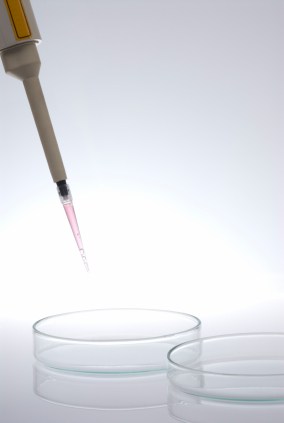Determining the cause of infertility is the first step in helping a couple get pregnant after about a year of unsuccessful attempts. There are several different tests that doctors can use to take a closer look at what could be going on. They range from very simple blood samples to pretty uncomfortable, slightly more invasive tests. Typically, doctors will start out with the easier tests before moving on to the more complex ones. Understanding the tests used to determine the cause of infertility can help you feel a little more comfortable and give you a better idea of what to expect from your visit to the fertility specialist.
Common tests used to determine cause of infertility
- Physical exam. The first step in determining the cause of infertility is taking a look at the general anatomy and physical appearance of your reproductive organs. An internal exam, similar to the one you receive when you go for your annual pap smear, can tell the doctor a lot about your reproductive system. For example, through a physical exam, the doctor can determine if your uterus is positioned correctly to support a pregnancy. Physical exams are also used to check for possible issues in the male reproductive system.
- Semen analysis. A semen sample is collected from the male partner to check for quality and quantity of the sperm. The lab may also look for other issues, such as possible infection, that could be hindering fertility.
- Blood tests. Both partners are typically asked to give a blood sample to look at hormone levels. For men, the lab is looking at the amount of testosterone present. For women, they are looking at several different hormones, including estrogen, Follicle Stimulating Hormone, Luteinizing Hormone and more. The blood test is fairly simple, although the technician does take a fairly decent amount of blood. If you’re prone to fainting during blood tests, you’ll want to lay down for this one. Blood tests may also be done to determine ovarian functioning by measuring the levels of hormones on specific days of your cycle.
- Ovulation tests. This is one that you typically do at home over the course of several months. Your doctor may ask you to use ovulation predictor kits and chart your temperature or other fertility signs. Here’s a tip: the ovulation predictor kits sold in dollar stores are just as accurate as those that cost upwards of $10 each in drug stores. Since you may need to use several a month, this can be a savings of hundreds of dollars over the course of your ovulation tracking.
- Hysterosalpingogram (HSG)- The HSG is one of the first more invasive tests that are done to determine the cause of infertility. During this test, your doctor uses ultrasound guidance to inject dye into your cervix so that it shoots through your fallopian tubes. This allows the doctor to see if the tubes are open, or if there is any blockage. If the dye shoots through unhindered, your tubes are clear. The HSG is very uncomfortable, although your pain tolerance will dictate just how bad it is.
- Hysteroscopy- If the HSG indicates abnormalities, this test is usually the next step. During the test, a tube with a camera is inserted into through your cervix into your uterus. The camera allows your doctor to take a closer look at the anatomy of your uterus and fallopian tubes.
- Laparoscopy. For this test, you are put under general anesthesia and knocked out. The doctor makes several small incisions into your lower abdomen and inserts a small camera on a tube into the incisions to look around inside. This can help diagnose cysts, endometriosis, and other issues that may be hindering your fertility.
The number and types of tests used to determine the cause of infertility depend on your medical history and what your doctor finds in earlier tests. Not all women have to go through every test. Talk to your doctor to find out which infertility tests are best for you, and about any concerns you have regarding each test.



When I was dating my now husband I would tell him all the time I could give up being anything I ever thought I wanted to be except being a mother. I am so blessed to have my children and I couldn’t imagine how hard it can be to have to deal with infertility. Thanks for sharing this information so people know of their options.
This is really good information for all women to know!
I was really lucky I didn’t have to worry about infertility at all when I was trying to conceive. It must be such a struggle but hopefully your post will help educate people on the tests available.
I hope it helps educate too! Thankfully there are so many options now for women who have difficulties.
My friend is going through this right now. Very hard and stressful.
I’m so sorry for her. I hope they can find the cause and her journey ends with her holding a healthy baby one day soon.
Sounds like the trials of infertility go far beyond the mental ones. I’ve not had to experience any of this, thankfully, but I give big credit to those who do.
They really do go beyond physical and mental. I went through it for six years, and every day was difficult. I’m one of the lucky ones, I was finally able to get pregnant and now have a healthy, happy 7 year old. But I was so shell-shocked by the whole thing, and my difficult delivery, that I decided one was enough! :)
This is good information to know. I’ll admit that I don’t know much about infertility because we don’t have issues but I like to be informed.